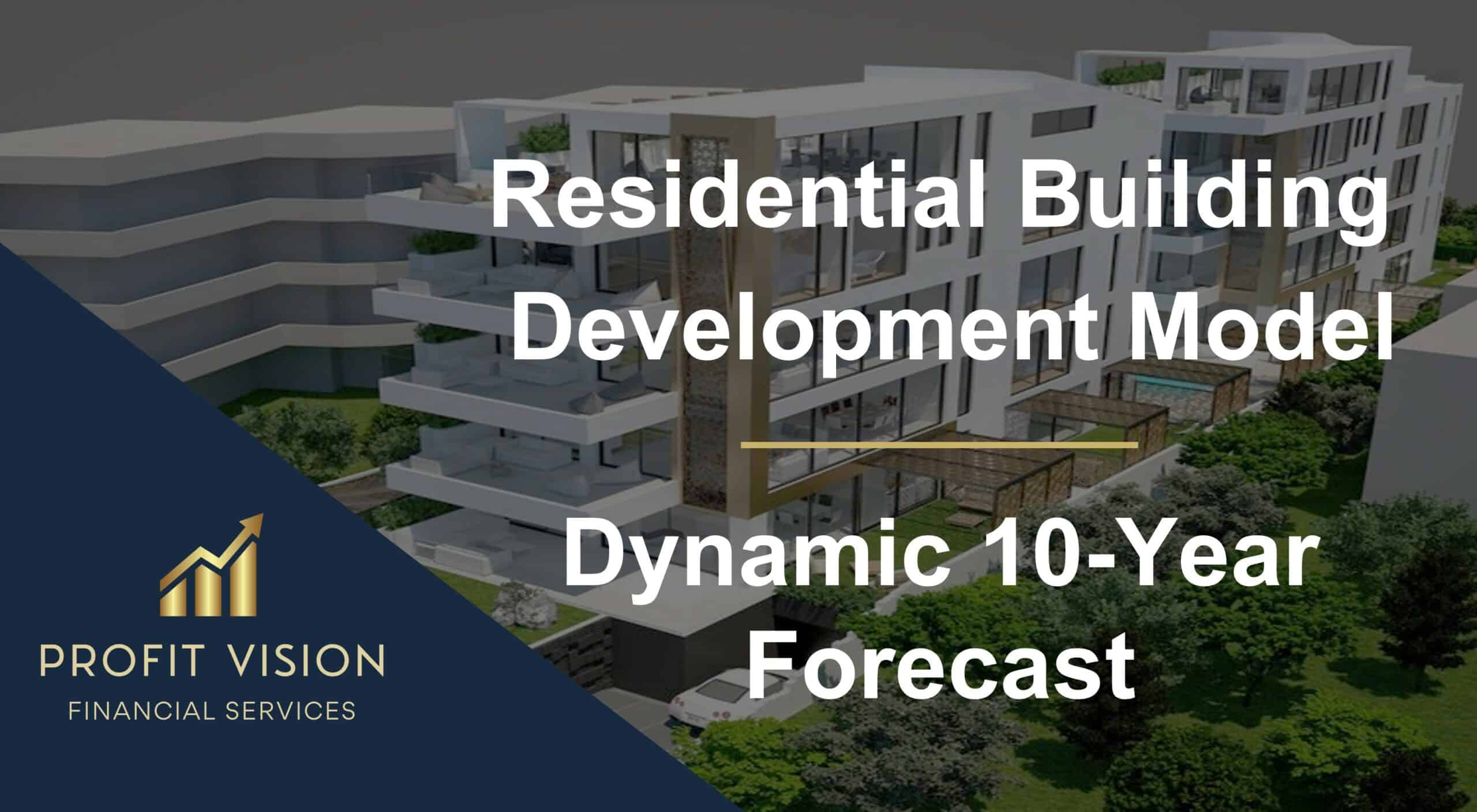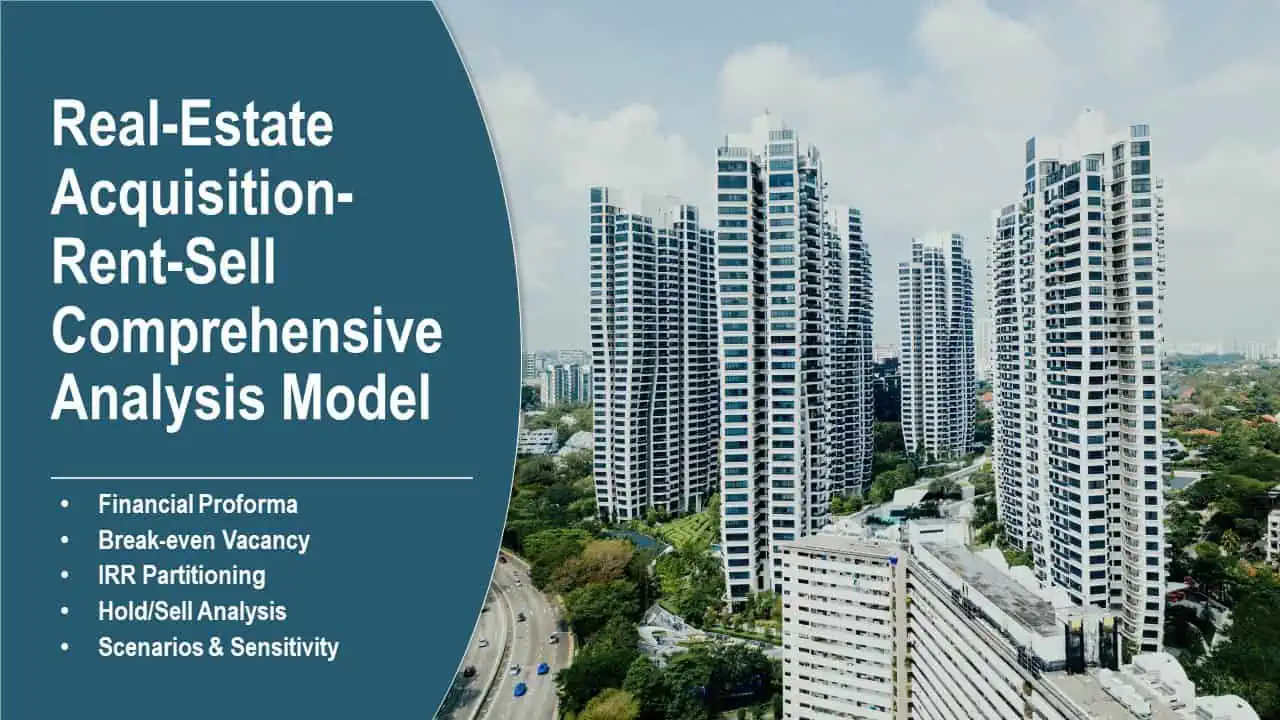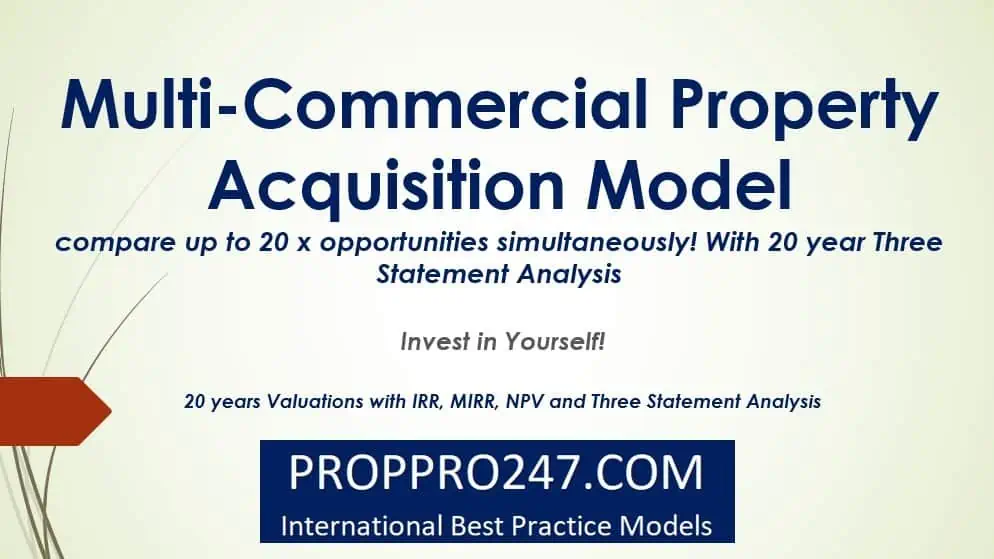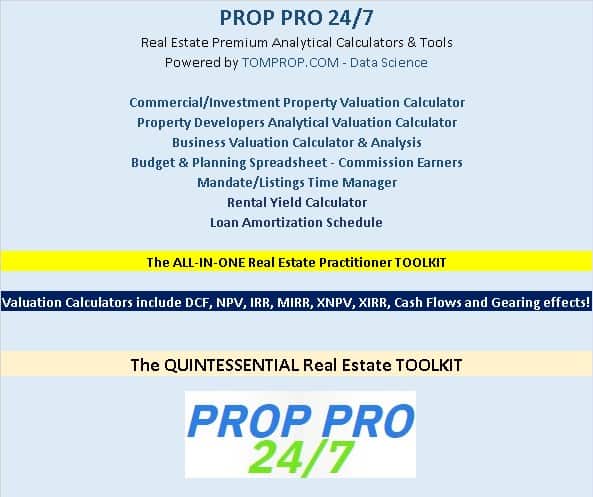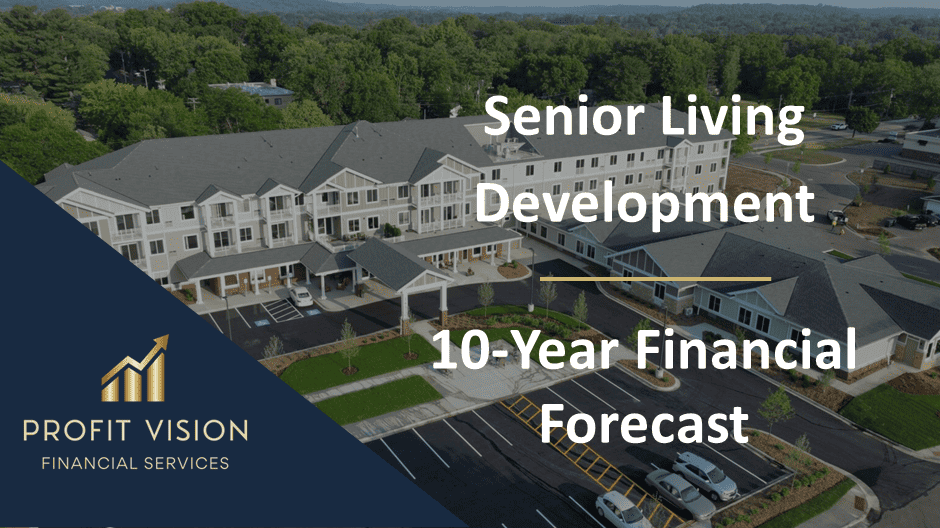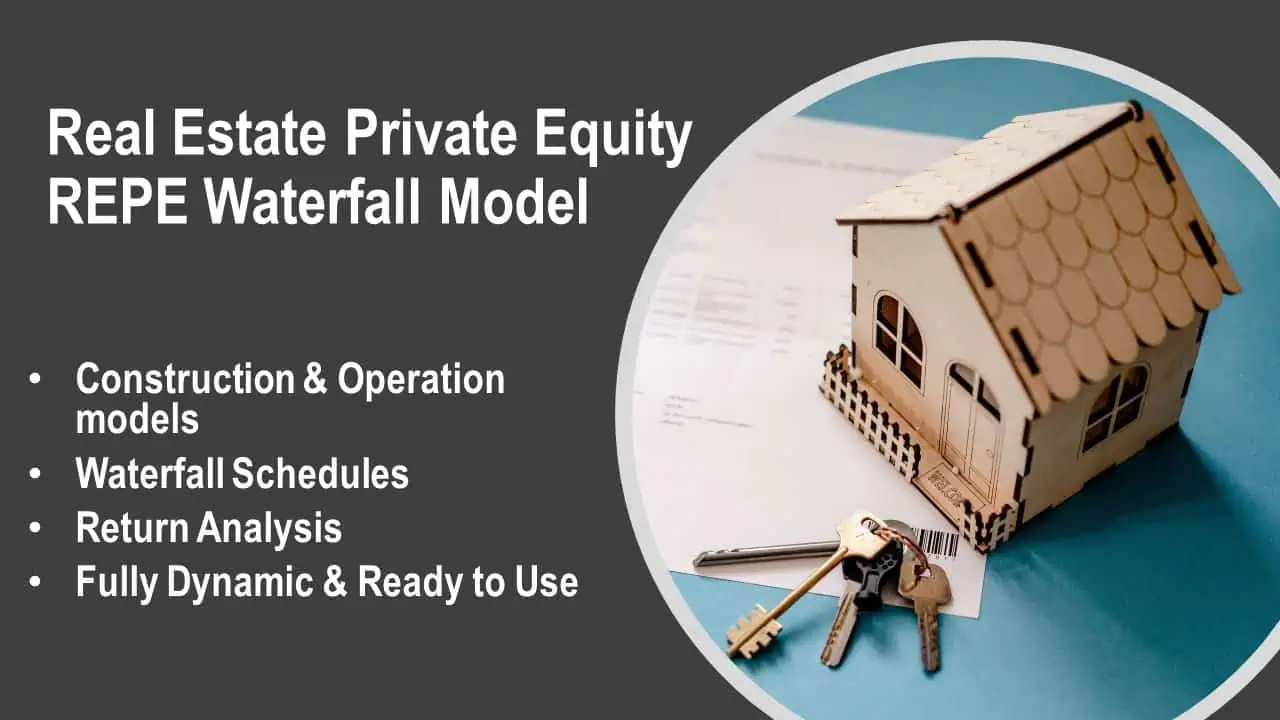Condo Development Model (Build and Sell)
A financial forecasting model specifically designed for the economics of building new condos and then selling them.
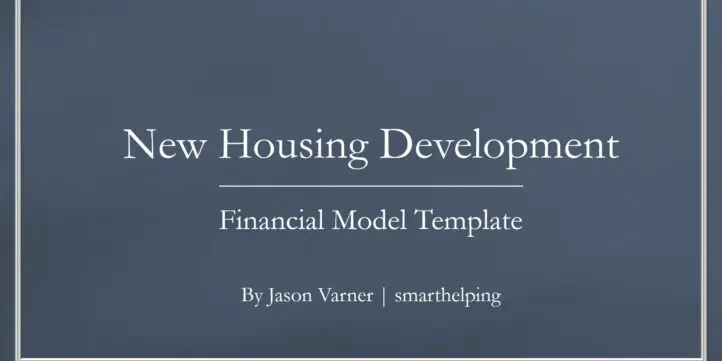
Video Overview:
This 10-year joint venture real estate model is perfect for planning out all the financials for condos or new housing developments. It has assumptions for land purchase, dynamic construction costs based on up to ten condo types, an option for GP fees and two separate cash flow waterfall options (IRR Hurdles or simple preferred return), and lots of slots to put in other hard construction costs over time.
There is also an option for debt funding of the initial construction / land costs with an interest-only loan. The repayment input is simple as the model shows the available sales proceeds by month, and you can define how much of that is used to pay back the debt on the same schedule. The balance and interest will update accordingly.
Even if you are a developer that is not in joint ventures, the model will still work perfectly fine. You can just zero out the assumptions for the investor, and all project cash flows will just populate for the sponsor / GP.
For this template, my goal was to specifically cater to the new housing developer that builds and sells only. The way the logic works for units is simple. You will have three rows for each condo type. The first row defines the count of condos of a given type that are started per month, the second row is for the count of condos sold per month, and the third row is for the average selling price per condo. This enables easy analysis of various timing assumptions for how long it takes to sell the condos, how long it takes to build them, and the resulting IRR for investors / the project.
One interesting feature I did was put a unique hard cost schedule in for each condo type. The total costs from that schedule will automatically fill in based on the count of condos started each month. That way you can scale arbitrarily large or small contracts more easily and accurately. There are still other input rows for general construction and development costs that can’t directly be tied to a given unit type.
Output metrics include IRR, ROI, Equity Multiple, DCF, and NPV for both cash flow waterfall options as well as the project.
Similar Products
Other customers were also interested in...
Mixed-Use Real Estate Model: Leverage / JV Options
A general real estate model to plan all assumptions for up to 7 'uses' for a given property. Include... Read more
Real Estate Financial Model Bundle
This is a collection of financial model templates that provides the financial projections and valuat... Read more
Residential Building Development Model (Sale, Rent...
Financial model presenting a development scenario for a Residential Building with units available fo... Read more
Real Estate Acquisition-Rent-Sell Comprehensive An...
An integrated, dynamic and ready-to-use Real Estate Acquisition-Rent-Sell Comprehensive Analysis Mod... Read more
Acquisition Model for Commercial Property
This is the Quintessential Commercial Property Acquisition Model that allows you to compare up to 20... Read more
The Realtors Quintessential ALL-IN-ONE Toolkit
Professional Realtors need a professional Toolkit which allows them to operate at a higher level. Th... Read more
Senior Living Development – 10 Year Financial Mo...
Senior living apartments are just that – apartments (townhouses and condos may also fall in this c... Read more
Multi – Unit Condos Model Template
Multi-Unit Condos Model presents the business case where a property with multiple residential units ... Read more
Real Estate Proforma – Value-Add Apartment A...
This multifamily apartment value-added real estate model is a sophisticated Excel-based analytical t... Read more
Real Estate Private Equity – REPE Financial ...
This Template is to provide users a ready to use tool of Real estate private equity valuation and wa... Read more
You must log in to submit a review.















